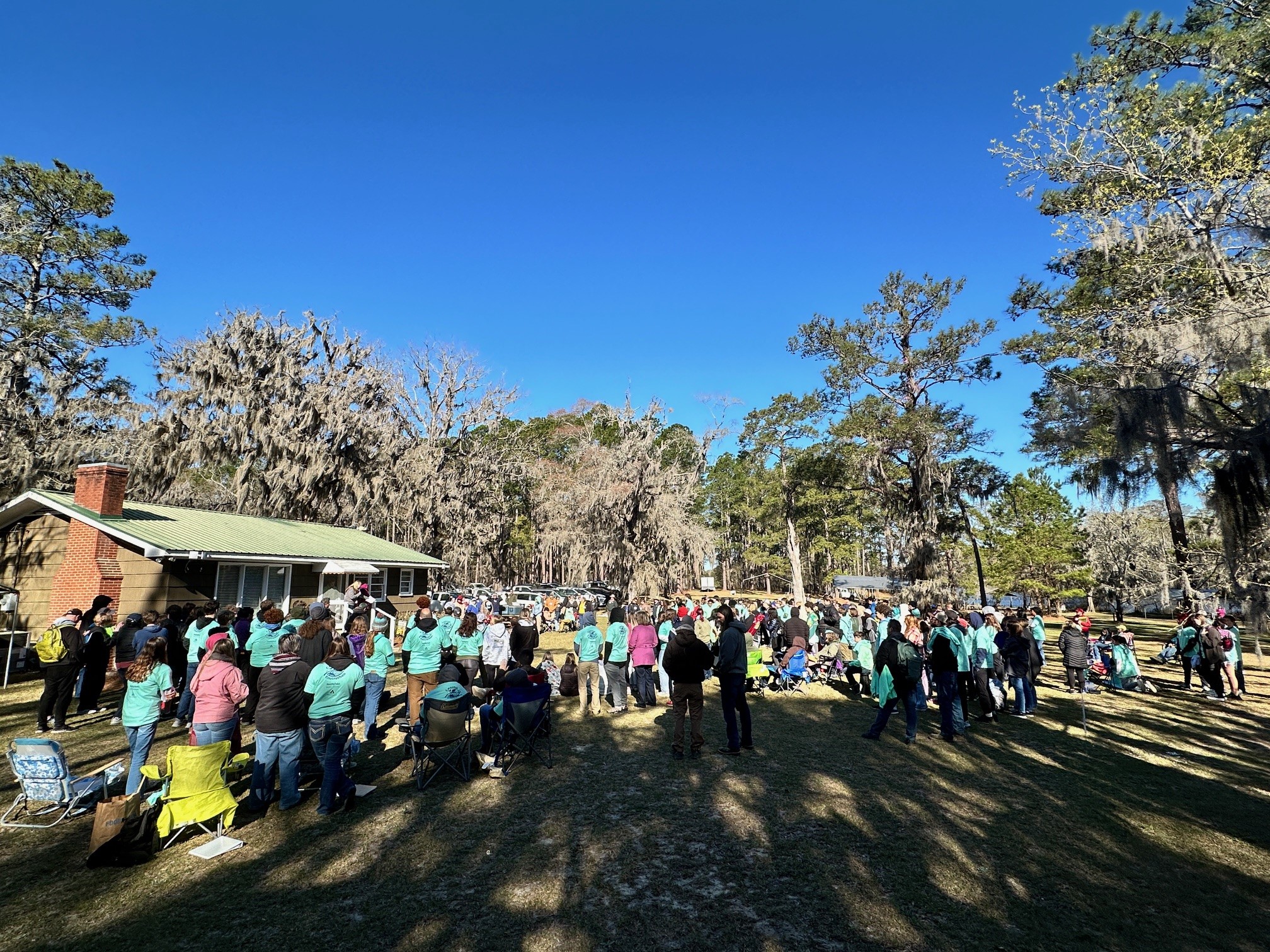
The dam Ben Kamps discovered on a branch of Houston Brook. The team estimates the dam could be nearly a century old.
In the days before highways and railroads, how did forestry companies transport their harvests from remote logging sites to sawmills and pulp mills located hundreds of miles away?
Often by water, in a clever practice called log driving.
Throughout the 19th century and for much of the 20th, logging crews built small dams out of wood and soil on waterways used to float the logs downstream. These dams helped control the flow of water and logs — but they also disrupted runs of Atlantic salmon, brook trout and other aquatic species that rely on those same waterways for habitat and migration corridors.
Efforts to remove log drive dams were underway even before the final log drive in the U.S. took place in Maine in 1976 (by then log drives had been replaced by logging roads and log trucks). But because many log drive dams in New England were built on private property in remote areas, state and federal officials don’t know how many remain to this day, or where they’re located.
So when Ben Kamps, New England area manager, found one on a branch of Houston Brook near Bingham, he realized he’d stumbled on a rare opportunity to restore some aquatic habitat.
A view of the same spot with the dam removed.
CLEARING THE WAY FOR NEW LIFE
Ben was working as a harvesting forester a number of years ago when he first noticed the dam on our Pleasant Ridge Plantation. He estimated it could be 100 years old, built many decades before we acquired the land. Ben took photos and sent the information to Henning Stabins, wildlife biologist for Northern Timberlands. Henning reached out to Merry Gallagher, a native fish conservation biologist with the Maine Department of Inland Fisheries & Wildlife.
“Brook trout are incredibly resilient in their undisturbed native habitats, but they face a lot of challenges, ranging from invasive species to climate change and obstructions in the waterways,” Merry says. “Every effort to help them can make a big difference.”
Eliminating these obstructions is key to restoring the habitat of species like brook trout, which need to be able to move freely to complete their life cycles and allow them to find quality habitat as conditions change.
“Landowners are crucial partners for us in habitat restoration efforts,” Merry says. “We’re so happy when they take the initiative to tackle these projects on their own, like Weyerhaeuser has done. It makes our jobs much easier.”
The project didn’t happen overnight — in fact, Ben says the hardest part was finding the dam again a few years after his initial report.
“It was a bit like finding a needle you accidentally dropped back into the haystack,” Ben says. “We were busy with other projects for a while, but when we had some road work going on in the same area last fall, it was the perfect time to jump on it.”
Removing the dam means local aquatic species such as brook trout will now be able to move freely up and down the waterway.
LIVING OUR SUSTAINABILITY VALUES
On Nov. 1, Marcus Campbell, roads manager, worked with our road and bridge contractor to clear the dam with an excavator.
“It’s amazing how long it lasted,” he says. “It was built sort of like a log cabin, using round logs from native trees like spruce or hemlock. They were spiked together with nails and filled in with earth like an embankment.”
The crew carefully removed the structure, stabilized the steep banks and reconnected the stream.
“In what felt like no time flat, we had water flowing freely again,” Marcus says. “It’s wonderful knowing that, after all these years, native aquatic species will be able to travel up that stream once again.”
Our foresters throughout New England are actively looking for more of these dams and carefully mapping them for future removal.
“Weyerhaeuser has been an excellent partner to work with,” Merry says. “We’ve had a great working relationship over the years, and I’m looking forward to many more projects in the future so we can continue improving conditions for fisheries and wildlife here in Maine.”
Ben agrees.
“We want to be good stewards of the land and good citizens of our communities,” Ben says. “Actions like this show the world that ‘sustainability’ isn’t just a buzzword for us, it’s a value that guides everything we do. If we want our forests to last forever, we have to care for the entire ecosystem, not just the trees — and that’s exactly what we’re doing.”
A HISTORICAL BALANCING ACT
In Maine, millions of trees were cleared for settlements and agriculture and then transported over water to mills to be turned into lumber, paper and fuel. In the winter, when the water froze over, logging crews cut harvested trees into 16-foot lengths and hauled them with oxen or horses to the riverbanks, where the logs were decked onto “rollways.”
In the spring, when the water thawed, the logs were pushed into the river and the sluice dam gates were opened. Workers called log drivers, chosen for their agility and quick-footedness, would balance on the logs and help push them downstream, clearing log jams along the way.
If that skill sounds familiar to you, you’ve probably seen modern-day logrolling competitors fight to stay afloat in the Lumberjack World Championships and other logging contests.

